Double-peaked M6.3 solar flare erupts from AR 3213
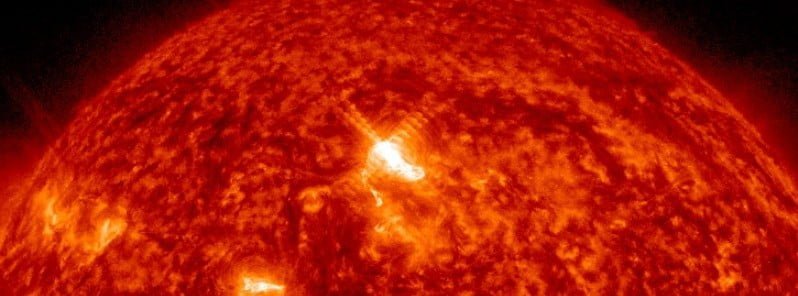
Active Region 3213 rapidly emerged on the visible disk on February 6 as just a few sunspots but has since grown into a mature, magnetically-complex sunspot group, producing several M-class flares, including a double-peaked flare that began at 22:46 and peaked at 23:07 as M6.3. The first peak was registered as M3.8 at 22:58 UTC.
There were no radio emissions associated with this flare that would suggest a coronal mass ejection (CME) was produced.
High-frequency communication blackouts were forecast to be most degraded over central Pacific waters.
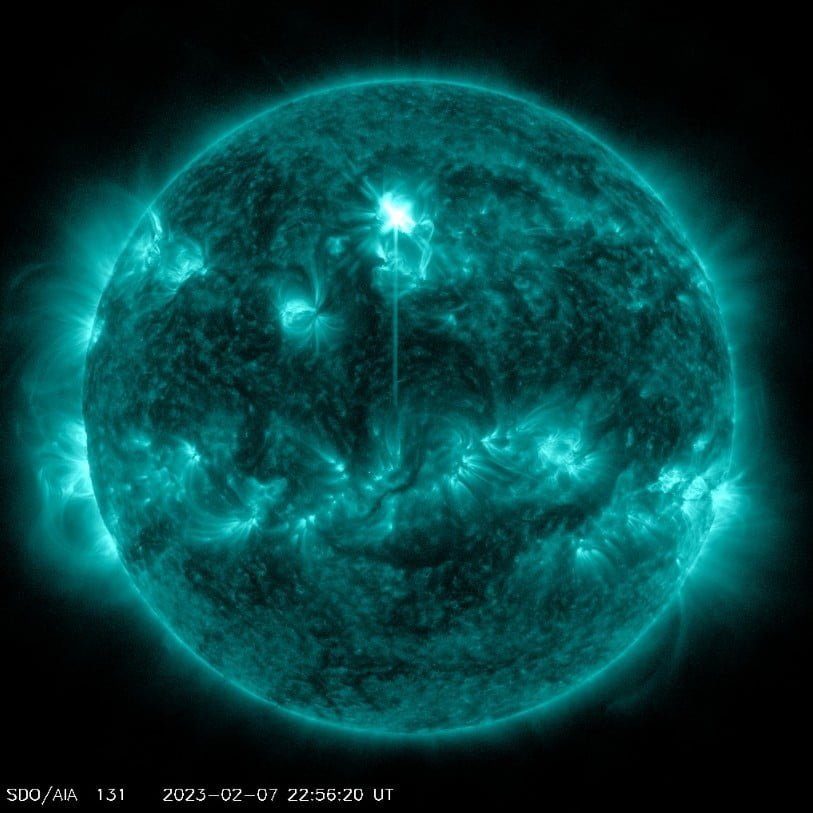
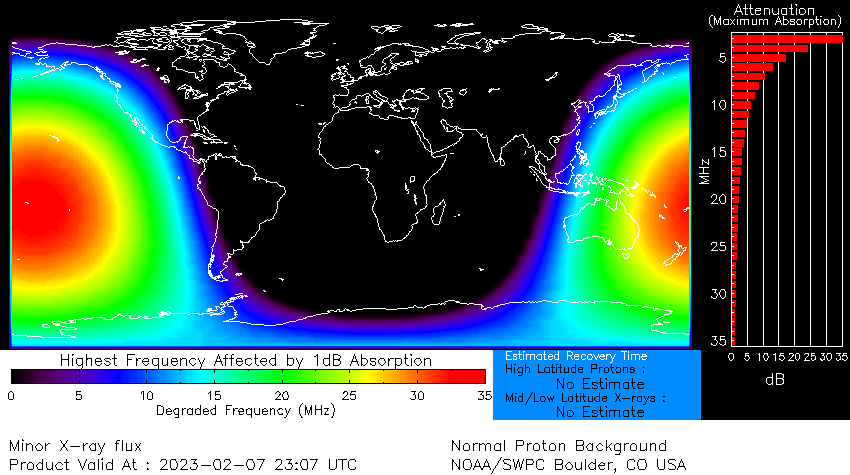
February 7, 2023, marked a day of moderate solar activity, with M-class flare activity and growth observed in active regions 3214 and 3213, the source of the aforementioned M6.3 solar flare.
Region 3214 showed growth in its intermediate spots while region 3213 exhibited growth, especially in its trailing spots, and was responsible for 2 other M-class flares — M1.5 at 20:01 UTC and M1.0 at 13:53 UTC.
In addition, an M2.0 was detected erupting from the same region at 02:53 UTC on February 8.
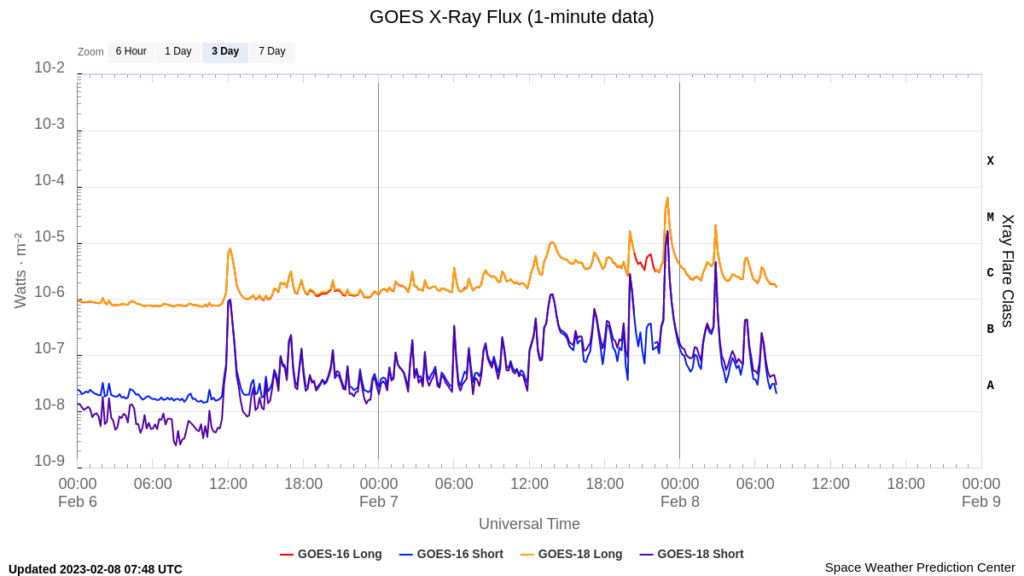
A coronal mass ejection (CME) was also observed emerging to the north-northeast in LASCO C2 imagery at 15:12 UTC, possibly associated with this active region.
This CME may have been associated with lower-level C-class flares that occurred between ~12:30 and 13:30 UTC, but confidence is somewhat low at this time due to the timing of the event and observation. Regardless, analysis and modeling are currently underway.
The remaining regions were stable and relatively quiet in comparison.
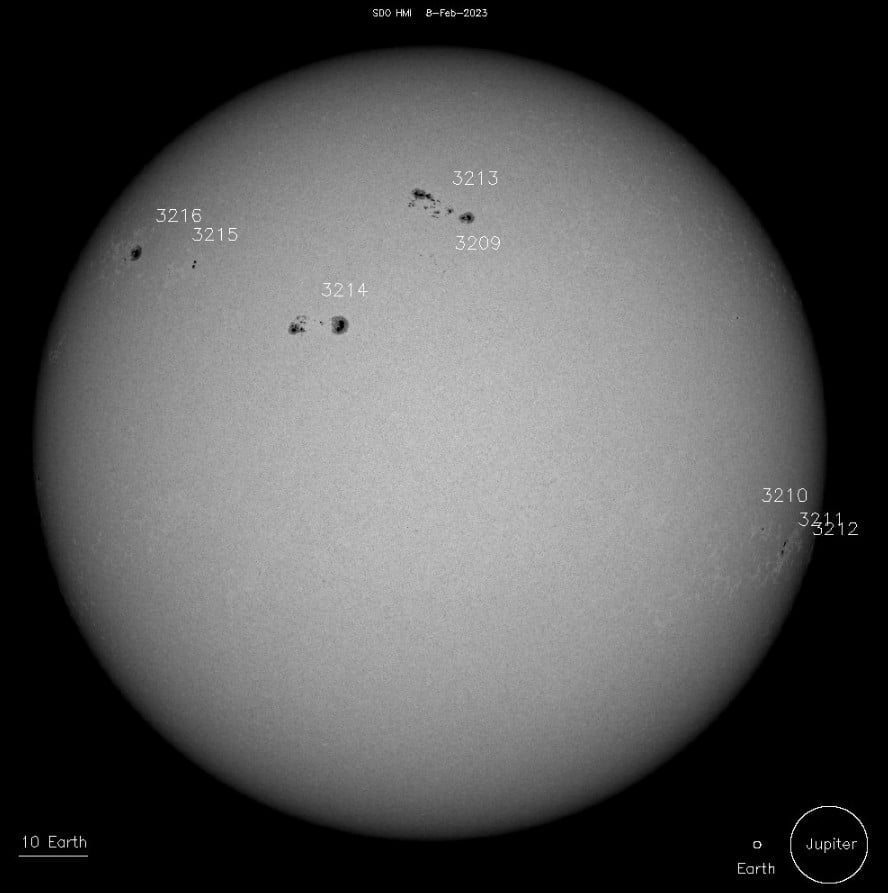
Coinciding with the M1.0 flare from AR 3213 was a very photogenic CME off the eastern limb that erupted around 13:45 UTC:
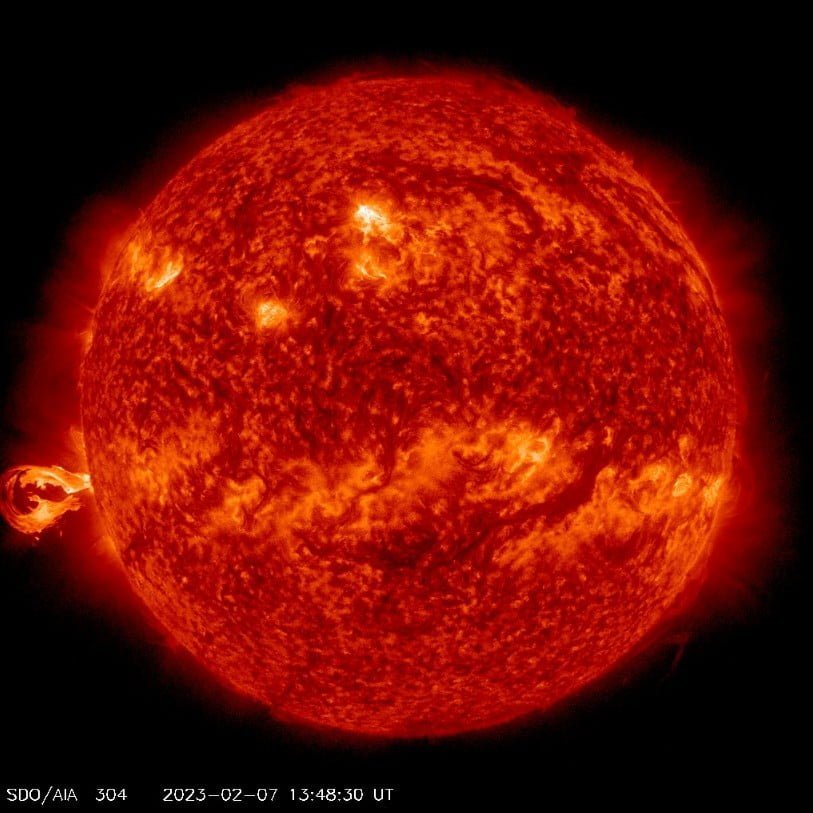
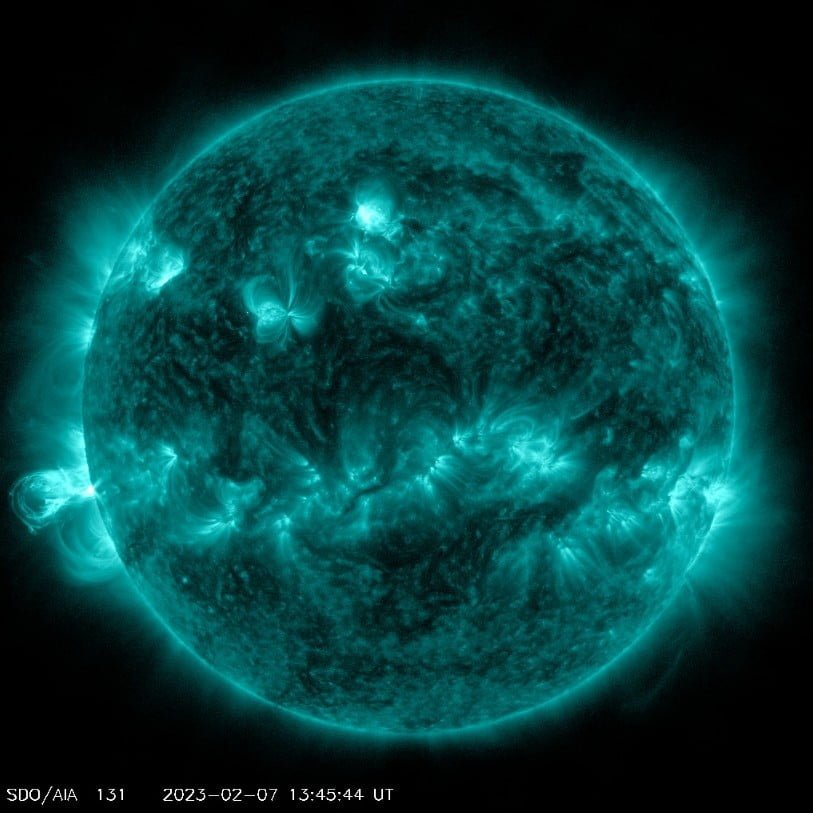
Solar activity is expected to be low with a 55% chance for isolated M-class flares over the next three days.
The greater than 2 MeV electron flux reached moderate levels and the greater than 10 MeV proton flux was steady at background levels in 24 hours to 00:30 UTC on February 8.
The greater than 2 MeV electron flux is expected to be moderate to high and the greater than 10 MeV proton flux is expected to persist at background levels over the next three days.
Solar wind parameters indicated the continued influence of a negative polarity coronal hole high-speed stream (CH HSS) yesterday and this influence is anticipated to persist, although weakening, over the next day. A decline towards a background-like state is expected to begin on February 9 and continue through February 10.
The geomagnetic field was at quiet to active levels due to the negative polarity CH HSS effects and is expected to remain so over the next few days.
Quiet to unsettled levels are expected today as negative polarity CH HSS effects continue, and primarily quiet conditions with a chance for isolated unsettled periods are expected over the next two days as CH HSS effects come to a close.
References:
1 Forecast Discussion – Issued: 2023 Feb 08 0030 UTC – Prepared by the U.S. Dept. of Commerce, NOAA, Space Weather Prediction Center
Featured image credit: NASA SDO/AIA 131, The Watchers

Commenting rules and guidelines
We value the thoughts and opinions of our readers and welcome healthy discussions on our website. In order to maintain a respectful and positive community, we ask that all commenters follow these rules.